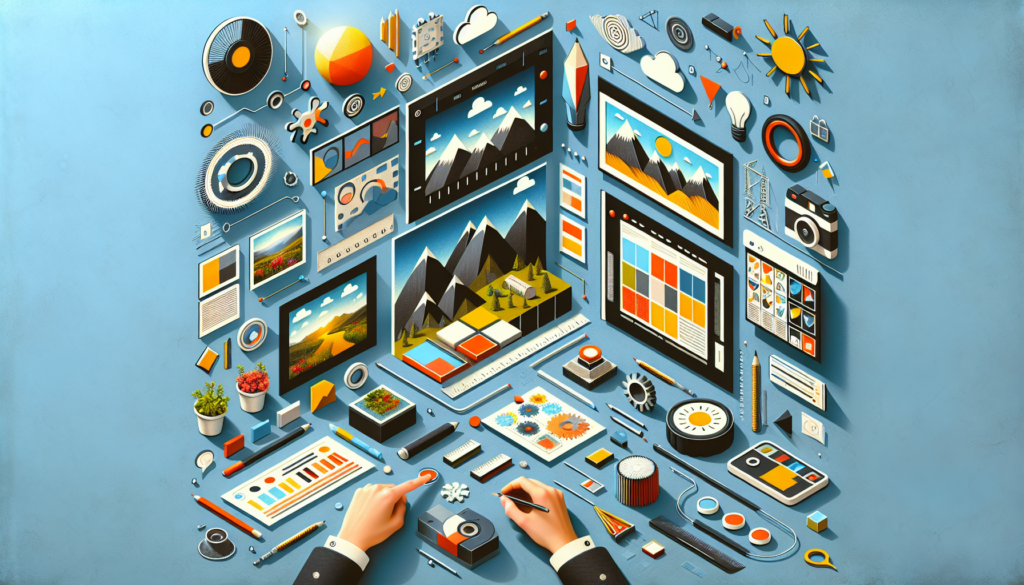In the current whirlwind where content visualization has become a fundamental cornerstone, designing an attractive project gallery is a critical aspect for professionals in design, architecture, engineering, and technology. The visual impact of a well-curated gallery can not only capture the audience’s attention but also efficiently communicate the intrinsic value of each presented project, significantly influencing its perception and appraisal. In this article, we will tackle everything from design theory and the psychology of visual perception to the latest trends in web development and UX (User Experience), to offer a compendium of strategic and technical advice aimed at the creation of project galleries that stand out in a highly competitive digital environment.
Visual Design and Information Architecture
Basics of Visual Perception
Humans process visual information in a complex and sophisticated way, thanks to a combination of patterns, colors, and compositions that command our attention. For an effective project gallery, it’s crucial to understand and apply gestalt principles, such as the law of proximity, the law of similarity, and the law of closure. Employing a layout that groups related elements and visually differentiates various projects can lead to a more intuitive and satisfying navigation experience.
Visual Hierarchy and Color Usage
A clear visual hierarchy ensures that the most important aspects of each project are highlighted. Strategic use of color can help emphasize key information, directing the user’s gaze to focused areas of interest. However, it’s essential that this use of color preserves aesthetic coherence and reinforces the identity of the portfolio.
Responsive Design and Adaptability
Given the increasing use of multiple devices to access online content, responsive design becomes a non-negotiable imperative. This means that the gallery should offer a consistent and optimal user experience across all platforms and screen sizes.
Web Development Technologies and Tools
High-Performance Platforms
Optimizing loading speed is critical. The use of development platforms and tools like React, Angular, or Vue.js, along with advanced techniques for lazy loading and image optimization, are factors that directly impact user experience and SEO rankings.
Using CMS and Frameworks
Content management systems (CMS) such as WordPress, Joomla, or Drupal offer plugins and themes that can be customized to create robust galleries. On the other hand, CSS frameworks like Bootstrap or Tailwind allow the designing of consistent and scalable interfaces while streamlining the development process.
Innovation in Interaction and Navigation UX
Microinteractions and Animations
Microinteractions are small animations or effects that occur in response to user action. These details add layers of sophistication to the interface and can significantly enhance navigability and aesthetic pleasure of the site.
Accessibility and Usability
Accessibility cannot be seen as an option but as a fundamental requirement. Ensuring that the gallery is usable by people with different abilities is not only a legal requirement in many contexts but also a practice of inclusive design that demonstrates professionalism and care for the audience.
Content-Oriented Interface
Rather than overwhelming the user with unnecessary visual elements, opting for a clean UI (User Interface) focused on content lets the projects speak for themselves and allows the quality of the work to be the true star.
Notable Case Studies
Interactive Galleries in Architecture
An interesting case study is the website of the architecture firm BIG (Bjarke Ingels Group), which has incorporated augmented reality elements and interactive 3D visualizations in its project gallery, providing an immersive experience that reinforces the studio’s innovative character.
Portfolios of Visual Artists
Visual artists, like architects, benefit enormously from galleries that allow detailed zoom and views emphasizing the texture and materiality of their works, such as in the digital portfolio of Yayoi Kusama, which integrates smooth navigation and visual effects that capture the essence of her art.
Prospective Future Innovations
The integration of artificial intelligence and machine learning in creating dynamic and personalized galleries for the user could mark the next frontier in user interface design. The ability to generate recommendations tailored to the interests and behaviors of the user would not only improve the experience but also create opportunities for efficient content discovery.
In conclusion, a project gallery is not just a showcase but a communicative piece that requires careful consideration of aesthetics, technique, and functionality. The union of these disciplines and knowledge is what will allow us to define and design digital spaces that not only captivate users but also immerse them in a coherent and inspiring visual narrative that accentuates the value and uniqueness of each project presented.
We hope this compendium of advice serves as a guide and stimulus for all those looking to leave a distinctive mark in the digital landscape and share their work at the highest level of excellence and professionalism.

